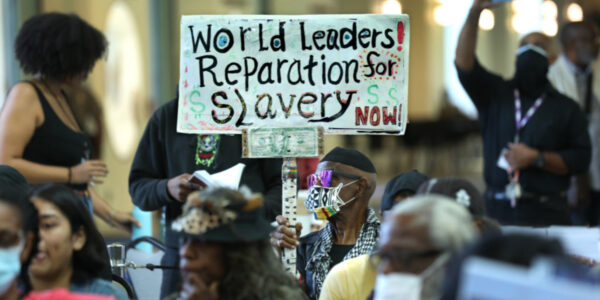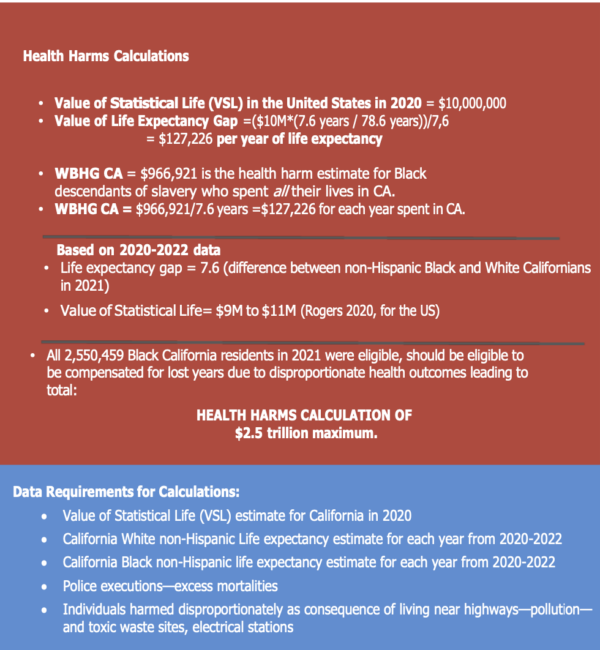California could pay Black Americans who are descendants of enslaved Africans around $637 billion to more than $2 trillion in reparations, according to estimation models presented to the task force seeking to solidify a state slavery reparations plan.
Atlanta Black Star obtained a copy of a list of strategies that California’s Task Force to Study and Develop Reparations Proposals for African Americans can consider in assessing the cost of redressing slavery. A five-member economic consultant team presented the three estimation models in September.
One model calls for evaluating the harms or atrocities caused by slavery and racism and calculating the damages. For example, if the task force were to consider the health disparities and lower life expectancy caused by systemic racism, the state could owe about $2.5 trillion to the more than 2.5 billion Black people living in California in 2021.

Still, the task force’s final proposal, due in June 2023, will only calculate the amount due to direct descendants of enslaved people living in California and those residing outside the state harmed by its policies.
The task force of two years completed its first step: an extensive study into the effects of slavery. The 500-page report published this June laid out a dozen state and federal government misdeeds.
The expert group in its presentation this September also examined damage caused by housing discrimination, devaluation of Black businesses, mass incarceration and government seizures of Black property by eminent domain. However, the task force would have to determine which atrocities it would like to seek damages for and what time frame for each in its final proposal if the model is selected. “Health harm” holds the highest weight in the model.
“Black people have been sicker and died younger than white people,” the expert panel said.
The health outcomes for Black Californians are dire compared to their white counterparts. Black residents have the shortest life expectancy at 71 years, while white Californians have a life expectancy of 78.6, according to the most recent data.
The state’s Black population has experienced the highest death rates from various forms of cancer among all racial and ethnic groups and the highest rates of prenatal and postpartum conditions, including maternal deaths.

One other model calls for weighing the average racial wealth gap between white and Black people, a national formula developed by economist William Darity, with the population. With that approach, the state could pay $636.7 billion to roughly 1.8 million Californians with an enslaved ancestor.
Black households have a median wealth nationally of $24,100, compared to white households’ median wealth of $188,200, the most recent Federal Reserve Board Survey of Consumer Finances shows.
The third model presented by a five-member economic consultant team combines the two approaches. Under the plan, the task force would “develop and make clear a threshold or procedure for determining what constitutes a harm the state of California should compensate,” the presentation says.
Under the model, the state would consider $358,293 for every Black descendant of the enslaved in the U.S. in 2019 dollars or $759.9 billion. The task force would then determine how much California is responsible for in its proposal.
The task force will meet before the close of 2022 to start refining eligibility requirements and discussing what types of reparation proposals will be in the final report.


